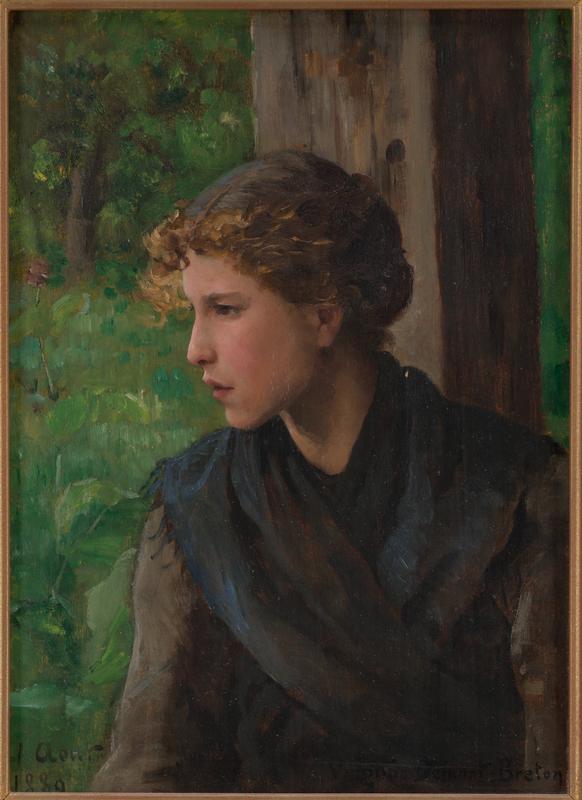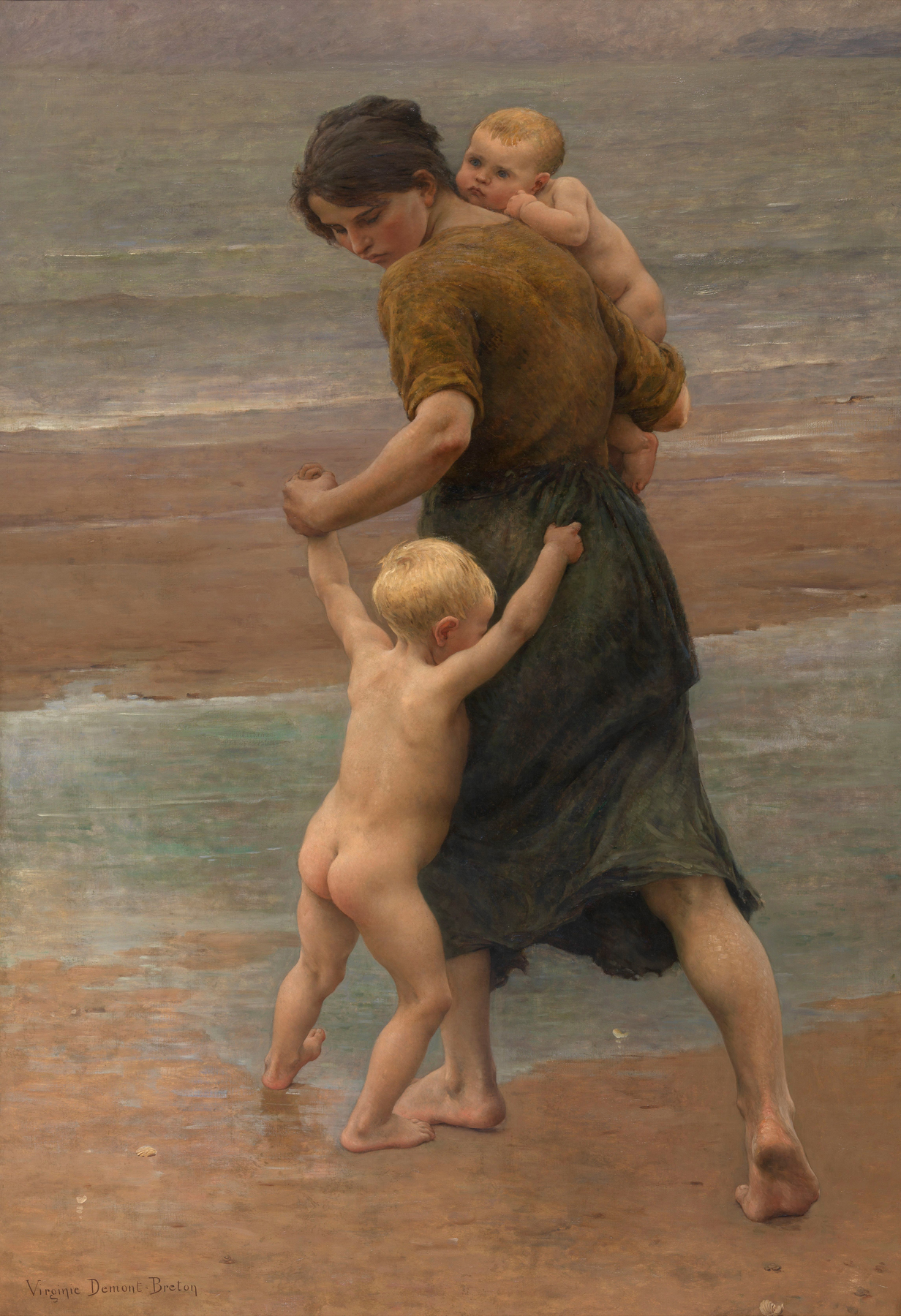
68. Virginie Elodie Demont-Breton, Head Study, Portrait of a Young Woman
| Artist | Virginie Elodie Demont-Breton, French, Courrières, Pas-de-Calais 1859–Paris 1935 |
| Title, Date | Head Study, Portrait of a Young Woman (Tête d’étude, portrait d’une jeune fille), 1889 |
| Medium | Oil on panel |
| Dimensions | 13 × 10 in. (33 × 25.4 cm) |
| Inscriptions + Marks | Lower right: Virginie Demont-Breton | Lower left: 21 Août / 1889 |
| Provenance | Possibly M. Cailliatte, Paris. Possibly De Coninck, Paris. [Clignancourt market, Paris; to Weisberg]; Yvonne and Gabriel Weisberg, Minneapolis |
| Exhibition History | Salon des Artistes Français, 1890, Paris |
| References | "Salon de 1890 catalogue illustré: Peinture et sculpture" (Paris: Librairie d’Art Ludovic Baschet, 1890), p. 13, no. 738 |
| Credit Line | Promised gift of Gabriel P. and Yvonne M.L. Weisberg, Minneapolis |
Virginie Demont-Breton took up painting at about age fourteen. Two years later, in 1875, she entered the progressive Académie Julian. She was interested in studying nudes, and there she’d be allowed to work directly from the model. If this seems precocious, it may be a result of her genes: she was the daughter of the artist Jules Breton (cat. no. 40).

Demont-Breton championed women’s rights.1 She exhibited at the Paris Salon for the first time in 1880 and received a third-class medal the following year. By the mid-1880s, she was advocating for the right of women to study at the École des Beaux-Arts (School of Fine Arts). Her goal was accomplished in 1897 while president of the Union des Femmes Peintres et Sculpteurs (Union of Women Painters and Sculptors), a post she held from 1895 to 1901. Demont-Breton won many prestigious awards over her career, including gold medals at the world exhibition in Amsterdam (1883) and two Expositions Universelle in Paris (1889 and 1900). She was only the second woman to be awarded the Legion of Honor, which she received in 1894; she was elevated to an officer in 1914.
Head Study is one of two works Demont-Breton exhibited at the 1890 Salon. The panel is small, perhaps painted in preparation for another composition. The model looks pensively into the distance, creating a sense of romantic melancholy. Although her identity is unknown, she seems to appear in other Demont-Breton works, such as Into the Water! (fig. 1), from the late 1890s. The artist likely created several small head studies to keep in her studio for use as reference images when making large-scale works. This practice was common among academically trained artists (as her father was) and dates back hundreds of years.
GPW
Notes
Her name reflects her marriage to painter Adrien Louis Demont (1851–1928) in 1880. ↩︎